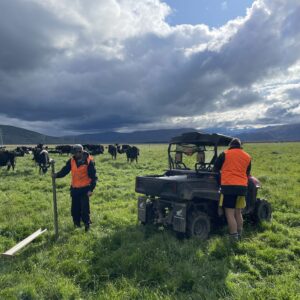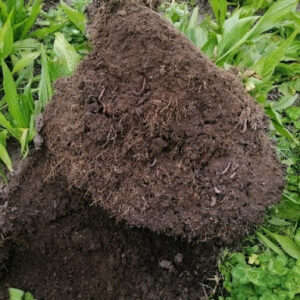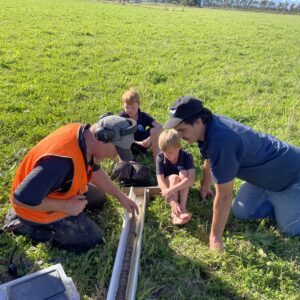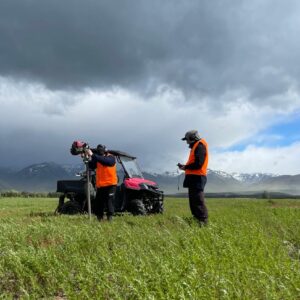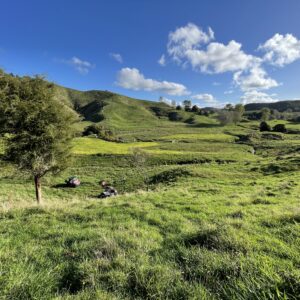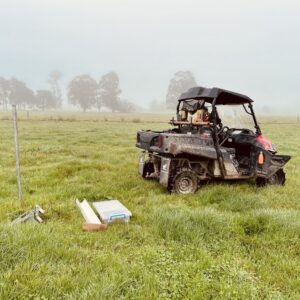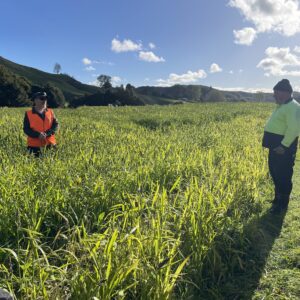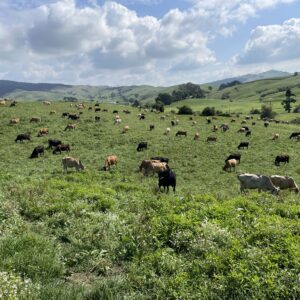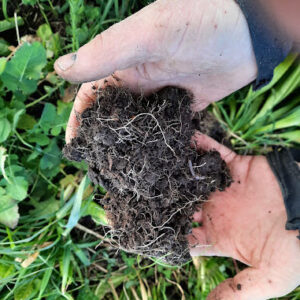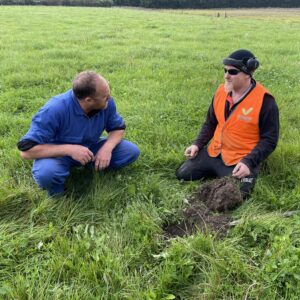Building Soil Carbon
Verdi is all about making your soil better by using smart farming practices. Good soil can take in carbon dioxide (CO2) from the air and keep it as organic carbon. This is good for the planet and good for your farm.
How can you make your soil better? Add more organic matter, plant different types of crops (diverse seed mixes), cut back on tillage, use fertilisers wisely, and manage your grazing to keep your pastures covered. This helps your plants grow deep roots and keeps your soil moist.
At Verdi, we’re here to help. By verifying the amount of carbon your soil is storing, you can earn carbon credits. But it’s key to get a baseline as soon as possible so we can measure the change.
Our Approach
Our approach is straightforward:
- Carbon Measurement: We assist farmers in measuring the carbon stored in their soil. This process not only helps combat climate change but also provides valuable data about the health and resilience of the soil.
- Carbon Verification: We guide farmers through the process of achieving certification for their carbon sequestration efforts. This includes measuring and verifying the farm's carbon removal activities at globally recognised standards, and facilitating the sale of carbon certificates.
The Benefits
Working with Verdi brings a range of benefits:
- Environmental Impact: By accurately measuring the carbon in your soil, you're contributing valuable data to the fight against climate change.
- Improved Soil Health: Carbon-rich soils are healthier and more fertile, leading to better crop yields and more resilient farms.
- Financial Incentives: Through the sale of carbon certificates, you can unlock a new source of income for your farm.
- Sustainable Branding: Achieving certification for your carbon sequestration efforts can enhance your farm's reputation and appeal to environmentally conscious consumers and suppliers.
Are you ready to make your farm a part of the solution?
The first step is getting a baseline with Verdi and get rewarded for journey towards sustainable farming:
Addressing Scope 3 Emissions: A Key Step Towards Sustainability
Scope 3 emissions, also known as value chain emissions, often make up the largest portion of an organisation’s total greenhouse gas (GHG) emissions. These emissions are typically the most challenging to measure and manage, as they encompass those produced by suppliers and producers in the company’s value chain.
For businesses, addressing Scope 3 emissions means focusing on the emissions produced by their suppliers, such as farmers. This is where Verdi comes in.
At Verdi, we provide precise measurement and verification of soil carbon levels. This data is invaluable for businesses looking to understand and reduce the carbon footprint of their agricultural supply chain.
How does soil carbon sequestration work?
Soil carbon sequestration is all about capturing carbon dioxide (CO2) from the atmosphere and storing it in the soil. Here’s how it works:
-
Trees & Plants Absorb CO2: Plants absorb CO2 from the atmosphere during photosynthesis. This is the process they use to make food, and it requires sunlight, water, and CO2.
-
Carbon Becomes Part of the Plant: The carbon from the CO2 becomes part of the plant, building its leaves, stems, and roots.
-
Plants Return Carbon to the Soil: When plants die or shed leaves, they decompose. This returns the carbon to the soil. Some of the carbon is also transferred to the soil through the plant’s roots.
-
Soil Microorganisms Break Down Plant Material: Tiny organisms in the soil, like bacteria and fungi, break down the plant material. This process stores the carbon in the soil.
-
Farming Practices Can Increase Soil Carbon: Certain farming practices can help increase the amount of carbon stored in the soil. These include adding organic matter (like compost or manure), planting cover crops, and reducing tillage.
So, soil carbon sequestration is a natural way to remove CO2 from the atmosphere. It’s good for the climate, and it’s also good for the soil. Carbon-rich soil is healthier and more fertile, which is great for growing crops.
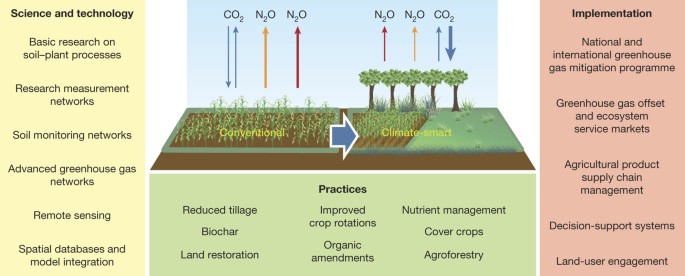
We’ve teamed up with scientists, advisors, and farmers like you to make a real difference in soil carbon storage. And we’re already seeing amazing results.
The soil on our current farms is regenerating, and that’s leading to better farm productivity, more resilience to climate changes, and healthier ecosystems.
If you are interested in joining Verdi please click the following link:
